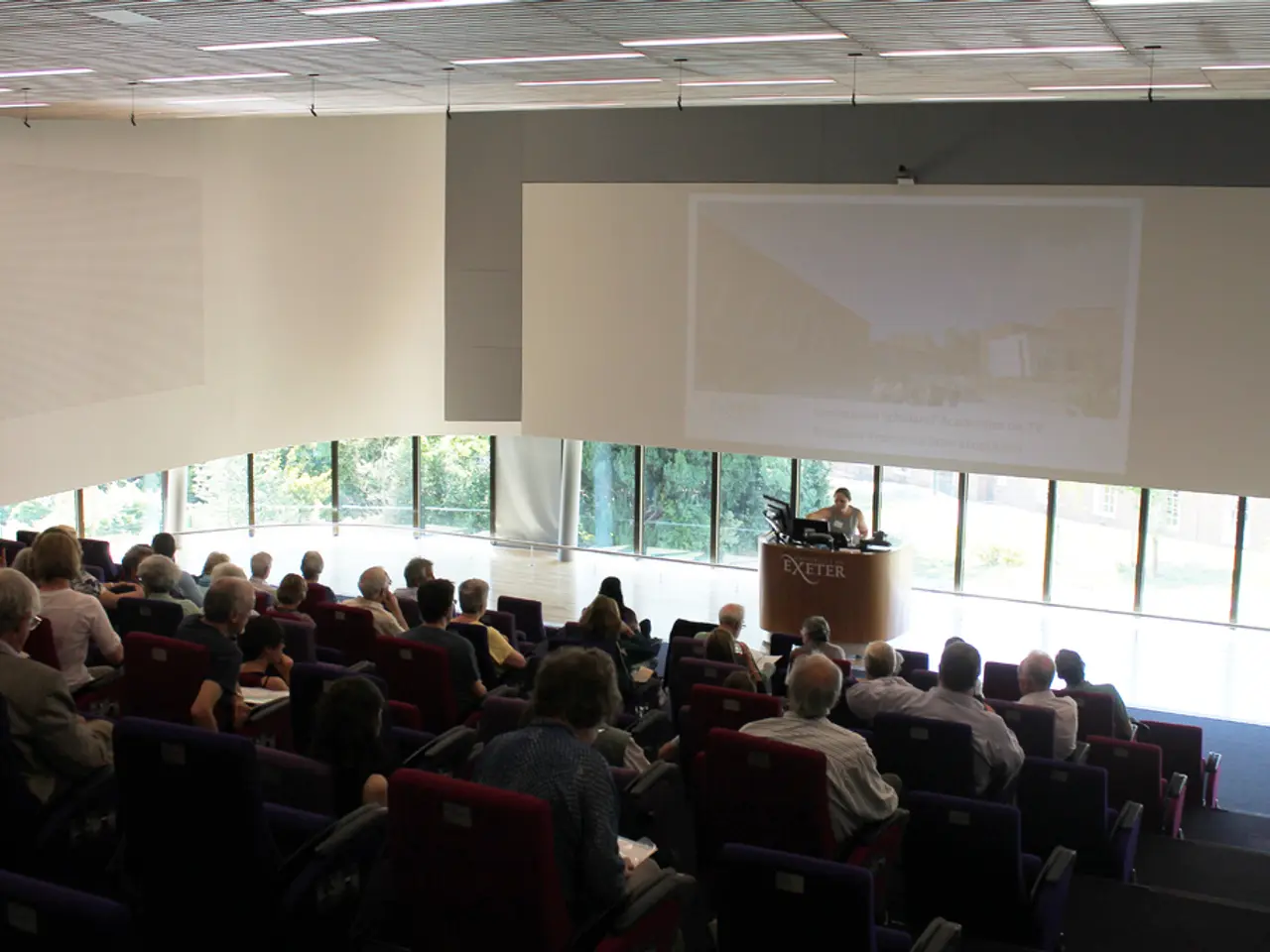Strategies for Enhancing the Collaboration between IT and Library Experts in Educational Settings
In a forward-thinking approach to education, the role of Instructional Technology Specialists (ITS) and Library Media Specialists (LMS) is being redefined from support roles to strategic partners in teaching and learning. Charlie Hinsch, Instructional Technology Coordinator at Virginia Beach City Public Schools, is leading this change, encouraging a connection not only amongst staff but between the ITS and LMS, referring to them as the 'Educational Technology Team'.
Hinsch's work was recently recognised with the Innovative Instructional Technology Coordinator Award during the Pre-ISTE Summit in San Antonio as part of Tech & Learning's Innovative Leader Awards.
Principals are encouraged to join conferences to understand the value of these conferences for ITS and LMS professionals. Conferences, such as STC, ISTE, and ALA, offer goldmines for growth and learning, driving initiatives such as digital citizenship, AI literacy, and the inquiry model for research.
The key practices for integrating ITS and LMS as strategic partners focus on fostering collaboration, shared leadership, and leveraging their unique roles as change agents to transform education.
- Establishing Mutual Respect and a Shared Vision: Like effective co-teaching models, ITS and LMS partnerships thrive when both professionals are recognised as equal leaders who co-plan, co-instruct, and co-assess learning experiences. A shared vision about their roles as instructional leaders and advocates for technology and information literacy is essential to drive change together.
- Collaboration in Curriculum Integration: ITS and LMS should work closely with classroom teachers to embed technology tools, digital resources, and information literacy skills directly into curriculum and research projects. This integrated approach ensures that students build digital literacy, research competency, and critical thinking across grade levels.
- Leadership in Professional Development and Change Initiatives: Both specialists serve as change agents by providing workshops and guidance to faculty on integrating technology and media literacy into instruction, modelling digital citizenship and ethical research practices, and advocating for equitable access to resources and inclusion of diverse perspectives.
- Resource Curation and Access Leadership: LMS typically manage library collections but also champion open, unbiased access to diverse information sources. ITS complements this by integrating adaptive and digital technologies, ensuring that resources support school goals while fostering intellectual growth and lifelong learning.
- Administering Shared Planning Time: Administrators should facilitate recurring, protected planning periods where ITS, LMS, and teachers collaborate to design lessons, assess student needs, and evaluate instructional effectiveness, reinforcing their roles as strategic partners rather than isolated service providers.
- Advocacy and Policy Development: Together, ITS and LMS participate in school leadership and policy discussions, advocating for infrastructure, digital equity, and library policies that remove barriers to accessing information, supporting a school culture of inquiry and innovation.
By embedding ITS and LMS roles within instructional leadership teams and encouraging continuous collaboration, schools can harness their expertise as change agents who promote student engagement, equity, and critical competencies for the 21st century. ITS and LMS are seen as valuable for reimagining pedagogy and enhancing learning, not just troubleshooting. They are also considered crucial for meeting standards in ensuring students graduate with necessary knowledge, workplace skills, and community engagement.
In conclusion, the future of education lies in the strategic partnership between ITS and LMS. By recognising their roles as change agents and integrating them into the instructional fabric of a school district, the entire system becomes future-ready. ITS and LMS are encouraged to seek other opportunities for investing in themselves, such as submitting proposals for national conferences like STC, ISTE, and ALA. Hinsch emphasises the importance of creating a culture of respect between ITS, LMS, and educators to encourage a cohesive school atmosphere.
- Instructional Technology Specialists (ITS) and Library Media Specialists (LMS) are increasingly being viewed as strategic partners in teaching and learning, with their role redefined by Instructional Technology Coordinator Charlie Hinsch at Virginia Beach City Public Schools.
- Hinsch, who recently received the Innovative Instructional Technology Coordinator Award, encourages a connection among staff, referring to ITS and LMS as the 'Educational Technology Team'.
- Principals are being encouraged to attend conferences, such as STC, ISTE, and ALA, to understand the value they offer for ITS and LMS professionals, driving initiatives such as digital citizenship, AI literacy, and the inquiry model for research.
- Key practices for integrating ITS and LMS as strategic partners include fostering collaboration, shared leadership, and leveraging their unique roles in transforming education.
- ITS and LMS work together to embed technology tools, digital resources, and information literacy skills directly into curriculum and research projects, ensuring that students build digital literacy skills across grade levels.
- Both specialists lead workshops and guidance for faculty, model digital citizenship and ethical research practices, and advocate for equitable resource access and diverse perspectives, promoting a culture of continuous learning and innovation.



